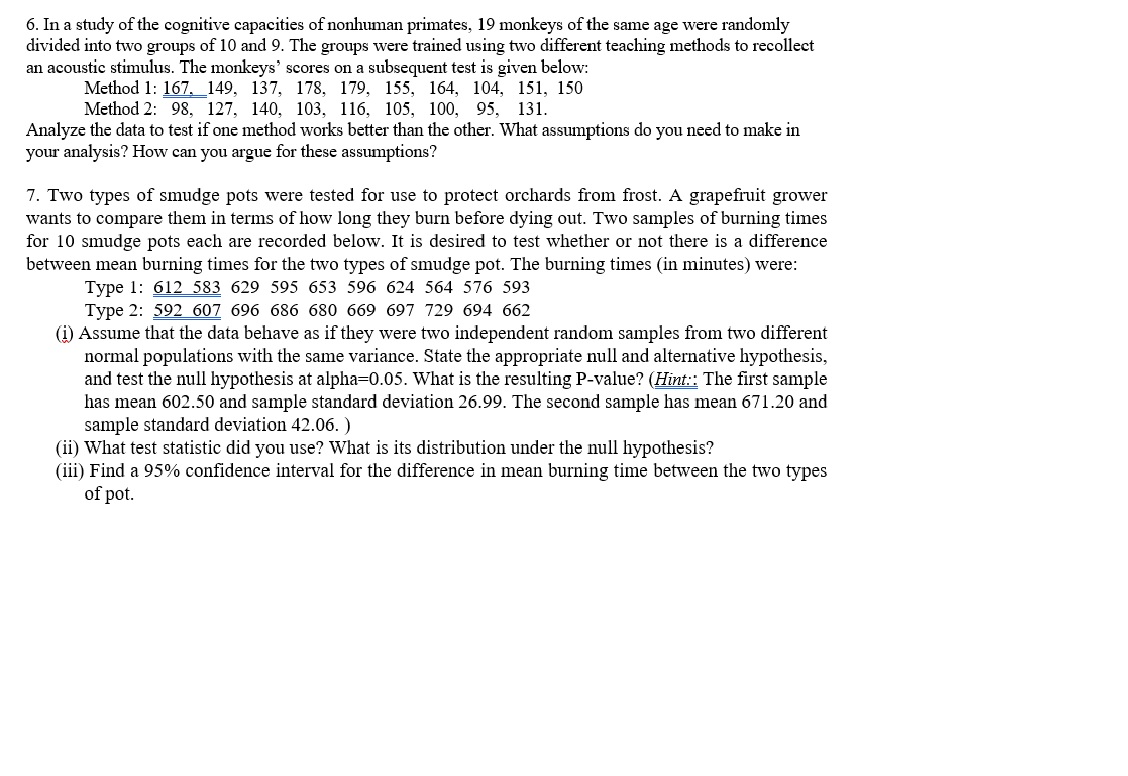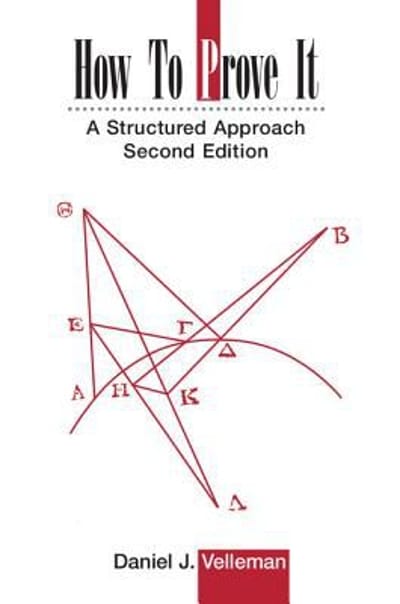Question
6. In a study of the cognitive capacities of nonhuman primates, 19 monkeys of the same age were randomly divided into two groups of 10
6. In a study of the cognitive capacities of nonhuman primates, 19 monkeys of the same age were randomly divided into two groups of 10 and 9. The groups were trained using two different teaching methods to recollect an acoustic stimulus. The monkeys' scores on a subsequent test is given below:
Method 1: 167, 149, 137, 178, 179, 155, 164, 104, 151, 150
Method 2: 98, 127, 140, 103, 116, 105, 100, 95, 131.
Analyze the data to test if one method works better than the other. What assumptions do you need to make in your analysis? How can you argue for these assumptions?
7. Two types of smudge pots were tested for use to protect orchards from frost. A grapefruit grower wants to compare them in terms of how long they burn before dying out. Two samples of burning times for 10 smudge pots each are recorded below. It is desired to test whether or not there is a difference between mean burning times for the two types of smudge pot. The burning times (in minutes) were:
Type 1:612583629595653596624564576593
Type 2:592607696686680669697729694662
(i) Assume that the data behave as if they were two independent random samples from two different normal populations with the same variance. State the appropriate null and alternative hypothesis, and test the null hypothesis at alpha=0.05. What is the resulting P-value? (Hint:: The first sample has mean 602.50 and sample standard deviation 26.99. The second sample has mean 671.20 and sample standard deviation 42.06. )
(ii) What test statistic did you use? What is its distribution under the null hypothesis?
(iii) Find a 95% confidence interval for the difference in mean burning time between the two types of pot.

Step by Step Solution
There are 3 Steps involved in it
Step: 1

Get Instant Access to Expert-Tailored Solutions
See step-by-step solutions with expert insights and AI powered tools for academic success
Step: 2

Step: 3

Ace Your Homework with AI
Get the answers you need in no time with our AI-driven, step-by-step assistance
Get Started


